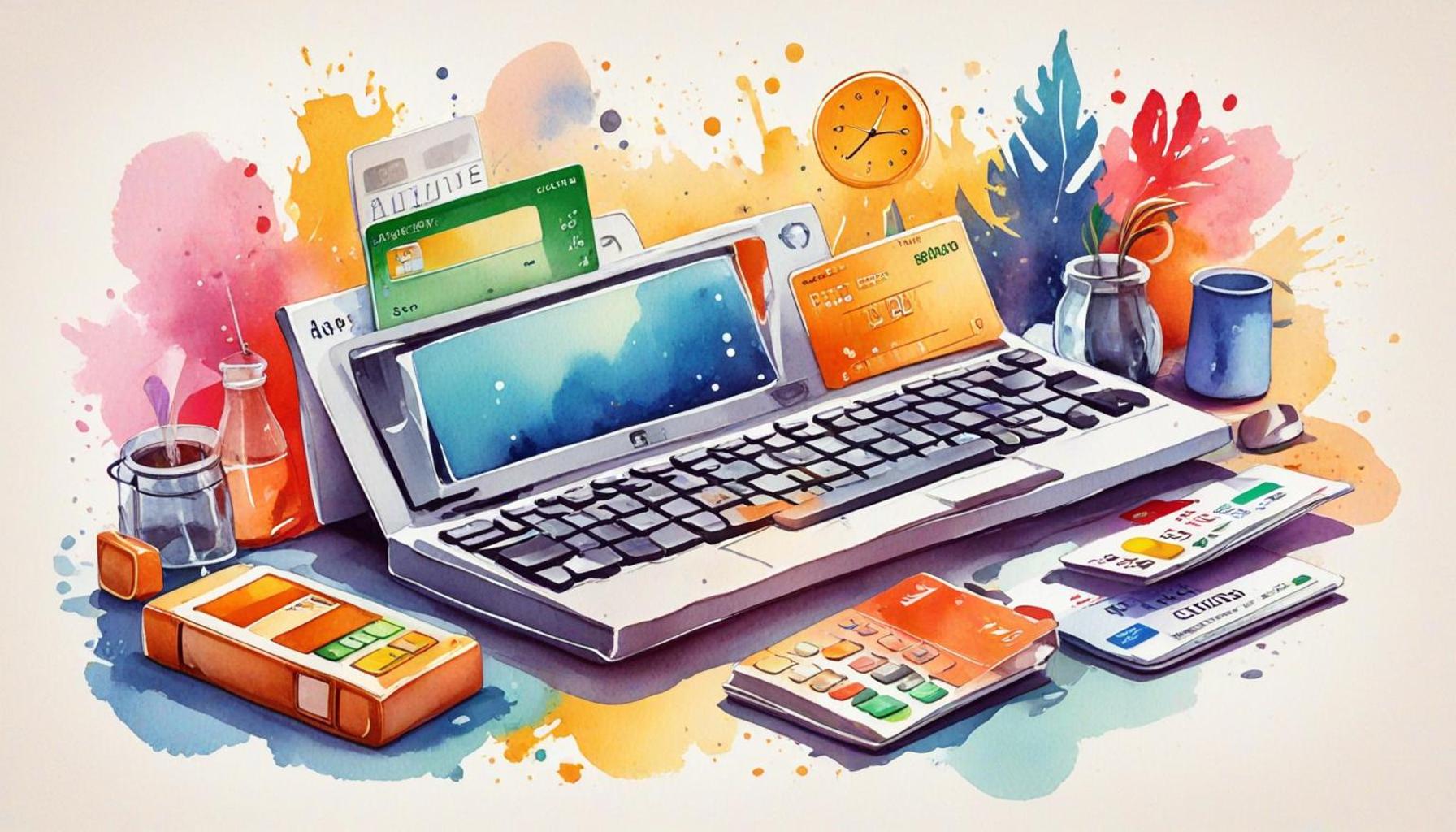How to Automate Your Payments to Avoid Delays and Penalties

Understanding Payment Automation
In today’s fast-paced world, managing your finances can feel like a juggling act. With bills arriving at different times and various payment methods to keep track of, it’s easy to lose sight of due dates. As a result, you may find yourself dealing with penalties and the stress that comes with missed payments. This is where payment automation comes in, offering a systematic solution that simplifies your financial management.
Key Benefits of Payment Automation
Automating your payments presents numerous advantages that foster a better grip on your finances. Let’s delve deeper into some of these benefits:
- Consistency: Automated payments ensure that your bills are paid on time, every time. This reliability plays a crucial role in improving your credit score. For instance, when mortgage payments are made promptly, it demonstrates to lenders that you are a responsible borrower, significantly enhancing your creditworthiness over time.
- Convenience: With life’s many responsibilities, finding the time to remember payment dates can be challenging. Automating your payments allows you to set them up once and forget about them. For example, you could schedule your monthly rent or utility bills to be automatically deducted from your bank account. This ensures that you maintain a stress-free life even amid a busy schedule.
- Savings: One of the most significant benefits of payment automation is the potential savings. By configuring your payments to occur automatically, you avoid late fees and penalties that can rapidly add up. In New Zealand, for it’s not uncommon for utilities, such as electricity or internet providers, to charge significant fees for missed payments. Automating your payments can help you sidestep these additional costs and keep your budget intact.
Services Offering Payment Automation in New Zealand
Many services in New Zealand provide user-friendly automation options, making it easy for you to streamline your financial obligations. Some popular categories include:
- Your local utility providers, such as electric and water companies, often allow set-and-forget payment arrangements.
- Mortgage lenders, where you can automate monthly repayments directly from your bank account.
- Subscription services, including popular programmes like Netflix or grocery deliveries, which can be scheduled for automatic billing.
Getting Started with Payment Automation
To embark on the journey of payment automation, start by identifying which bills you can automate. Then, consult with your service providers to see if they offer automated payment options—many companies readily facilitate this. Additionally, ensure you have adequate funds in your account to cover these automatic deductions to avoid overdraft fees.
In conclusion, adopting payment automation can transform your financial management from stressful to seamless. With no more missed due dates and potential savings on late fees, you’ll find that focusing on other important aspects of your life becomes much easier. By taking these steps towards automation, you’ll pave the way for more organized and effective financial health.
CHECK OUT: Click here to explore more
How to Choose Which Payments to Automate
Deciding which payments to automate is the first critical step towards simplifying your financial management. The key is to identify payments that are regular and predictable, as these will provide the greatest benefits when automated. Here are a few categories of expenses you might consider automating:
- Fixed Monthly Bills: These include payments like mortgage or rent, electricity, or internet services. Since these amounts remain steady each month, they are perfect candidates for automation. For instance, by setting up an automatic payment for your mortgage through your bank, you ensure that your payment is received on time and you avoid any potential penalties.
- Subscription Services: If you subscribe to services like Netflix, Spotify, or meal kit deliveries, consider automating these payments. Many of these companies offer options for auto-billing, which means you won’t have to think about renewing your subscription every month. This not only saves you time but also helps you avoid the frustration of a service interruption due to a missed payment.
- Credit Card Payments: Setting up automatic payments for your credit card can help ensure you never miss a due date. A recommended practice is to schedule these payments for at least the minimum amount due each month to shield yourself from late fees and avoid interest charges. By keeping your credit account in good standing, you will positively impact your credit score.
After identifying your payments, the next step involves navigating the automation process. Many service providers in New Zealand have made this incredibly easy. You can often set up automated payments through their websites or mobile apps. Look for an option that says “Direct Debit” or “Auto-Pay” to get started. Some providers may require you to fill out a form and provide your bank account details to facilitate the automatic transfers.
Before finalizing these arrangements, it is essential to review your bank account terms regarding automatic transactions to ensure you do not incur unforeseen fees. For instance, if you consistently maintain a low balance, confirming this arrangement can safeguard you from potential overdraft charges due to automated withdrawals.
It’s also advisable to regularly check your financial statements. Monitoring your accounts ensures that the right amounts are being deducted and helps you stay aware of any changes in billing from your service providers. Keeping track will help you catch any errors early, allowing you to rectify them before they lead to penalties or unnecessary stress.
In summary, automating your payments requires careful evaluation of your regular expenses and effective management of your account details with service providers. By thoughtfully selecting which payments to automate, you set the foundation for hassle-free financial management.
CHECK OUT: Click here to explore more
Setting Up Your Automated Payments
Once you have selected which payments to automate, the next step is to set them up properly. This process typically involves a few straightforward steps, but attention to detail is key to ensure everything runs smoothly and efficiently.
- Using Online Banking: Most banks in New Zealand offer user-friendly online platforms or mobile applications that enable you to schedule automated payments. Start by logging into your online banking account. Look for an option labeled “Payment Options” or “Automatic Payments.” This section usually contains clear instructions on how to set up recurring payments. You will likely need to enter the payee’s details, including their bank account number and the reference information, which could be your customer number or invoice number.
- Setting Payment Frequencies: Choose how often you want the payments to be made—whether it’s weekly, fortnightly, or monthly—based on the due date of each payment. For example, regular bills like your internet can be set for the same day you receive your salary to align your cash flow and reduce the chances of overspending during the month.
- Staying Organized: It is beneficial to maintain a dedicated file or digital folder that tracks all your automated payment details. This includes the service provider, the bank account from which the payments are deducted, the payment amount, and the frequency. A simple spreadsheet can serve this purpose well. This organizational tactic helps in quickly addressing any discrepancies that may arise and serves as a reference when you review your financial situation.
- Utilizing Alerts: To further reduce the risk of penalties or mishaps, consider setting up alerts with your bank. Most banking apps offer notification features that can inform you when a payment is processed or if your account balance drops below a certain threshold. This can be particularly helpful for catching any issues before they become problematic, such as insufficient funds to cover an upcoming automatic payment.
Understanding Potential Risks
While automating payments can streamline your finances, it’s important to remain aware of potential risks. One of the most significant issues could be an unexpected charge. Service providers sometimes change their billing practices, leading to higher payments than you might expect. Therefore, keep abreast of any correspondence from your providers regarding changes in rates or billing cycles.
Additionally, during periods of financial transition—such as changing jobs or undergoing significant life events—it is vital to review your automated payments. You may need to adjust the amounts or even temporarily halt some payments to ensure your budget remains manageable. Regular reassessment can prevent an untenable financial situation.
Leveraging Technology for Efficiency
Another helpful tool available to Kiwis is the utilization of financial management apps. Programs such as Pocketbook or YNAB (You Need a Budget) can help you track your expenses, manage your budgets, and remind you of upcoming payments. Integrating these apps with your bank accounts not only allows for better cash flow management but also gives you a visual overview of your spending habits, helping you stay on top of your finances effortlessly.
By taking these practical steps to set up and manage your automated payments, you can minimize the risk of payment delays and avoid unnecessary penalties. In a busy world, automation offers a way to streamline your financial responsibilities, but being informed and organized is essential to make the most of this handy system.
SEE ALSO: Click here to read another article
Conclusion
In today’s fast-paced world, automating your payments can significantly ease the burden of managing your finances. By implementing automated payment systems, you ensure that essential bills, such as utilities and subscriptions, are paid on time, helping you to avoid late fees and potential penalties associated with missed payments. The steps outlined in this article highlight the importance of using online banking tools, coordinating payment frequencies with your income cycle, staying organized, and maximizing alerts to keep your financial responsibilities on track.
Moreover, it is crucial to remain vigilant about changes in billing procedures from service providers and to periodically review your automated payments, especially during significant life transitions. This prudent practice can prevent unexpected financial strains and ensure that your payment system continues to align with your current financial situation.
Utilizing financial management apps can also provide an invaluable layer of oversight, allowing you to visualize your spending and maintain a tight rein on your budget. By embracing these strategies, you pave the way to more efficient financial management, freeing up time to focus on what truly matters in your life. Essentially, automation offers a powerful way to enhance your fiscal discipline, but it is your responsibility to keep informed and adaptable. By doing so, you not only simplify your life but also foster a healthier financial future.
Related posts:
Strategies to Accumulate Miles with Credit Cards Smartly
Student credit cards: advantages, disadvantages, and how to choose
How to Save Money Every Month Even with a Fixed Salary
Difference between credit cards with annual fees and without annual fees: which is more worth it?
Advantages of using personal finance apps for daily expense management
What is credit score and how to increase it safely

Linda Carter is a writer and financial expert specializing in personal finance and financial planning. With extensive experience helping individuals achieve financial stability and make informed decisions, Linda shares her knowledge on the our platform. Her goal is to empower readers with practical advice and strategies for financial success.